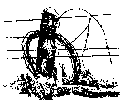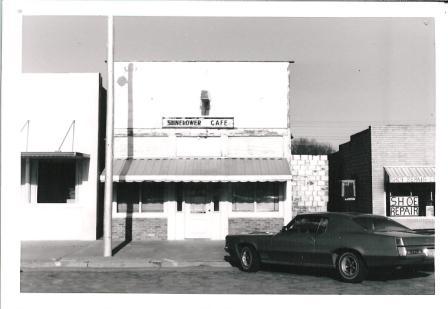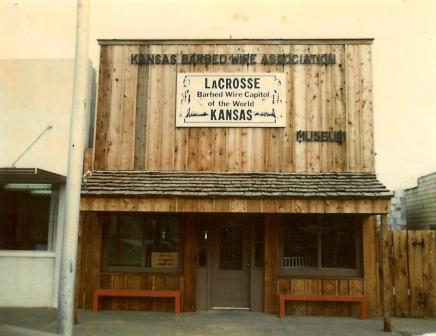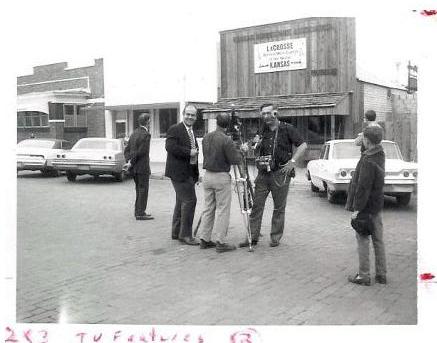

After the success of the annual Barbed Wire Swap & Sell, interest in the hobby continued to grow. Other collectors associations sprang up across the country. Collectors began to amass huge and valuable collections of barbed wire and related tools. Some realized a need for a permanent home to exhibit a sampling of these unique collections. Opportunity was knocking again. The same group of LaCrosse businessmen, along with a few veteran wire collectors, set to work on a barbed wire museum.
At the turn of the decade, the LaCrosse Chamber of Commerce purchased the old Sunflower Cafe building on Main Street on the east side of the 600 block of Main Street. They offered the front room to the barbed wire collectors.
A large part of the exhibits in the new museum came from the collections of veteran wire collectors, Leo Schugart of Hoisington, Kansas and Don Wigington of Quinter, Kansas. Schugart provided his barbed wire collection, and Wigington provided barbed wire related tools. With those collections, along with several other items, the museum was ready to go.
News of the unique museum spread like wildfire. In May of 1970, Charles Kuralt brought his On the Road crew and filmed a segment in LaCrosse at the yet to be dedicated museum. In May of the following year, the Barbed Wire Museum was officially dedicated. With barbed wire collecting now synonymous with LaCrosse, the small western Kansas community became known as “The Barbed Wire Capital of the World™”. For the next 20 years, the building was home to the world's first Barbed Wire Museum.



By 1990, it became apparent that more space was needed to house several large collections that had been offered to the museum. The downtown museum had only about 500 square feet of display space and that was already filled to capacity. In January of 1990, a new group of local businessmen had a meeting at the Family Castle restaurant in LaCrosse to discuss options to house the growing museum. The best alternative was to construct a 60' x 90' metal building in Grass Park adjacent to the Rush County Historical Museum and Post Rock Museum. Ground breaking was held in May of that year, and exactly one year later the new facility was dedicated debt-free.